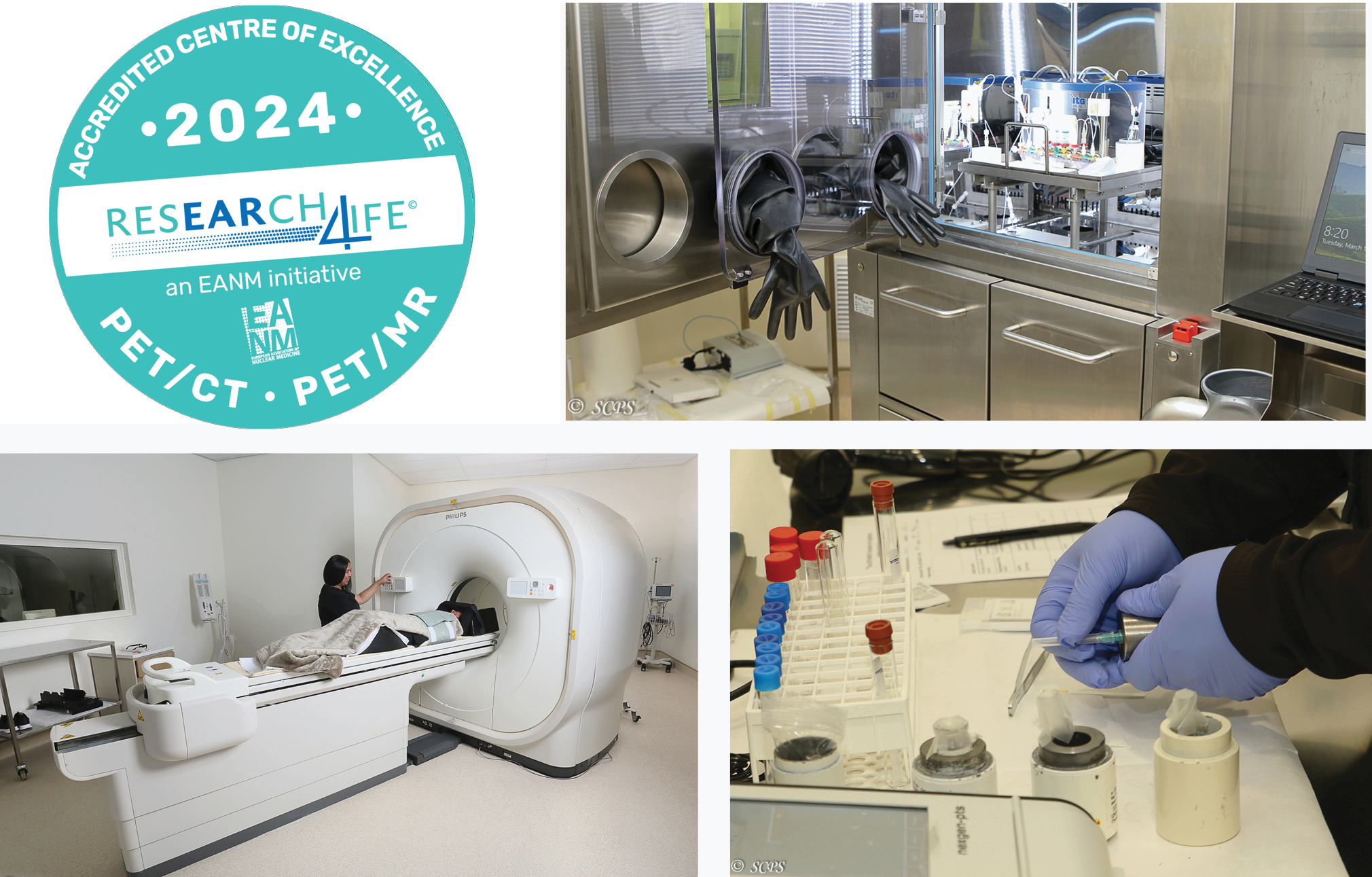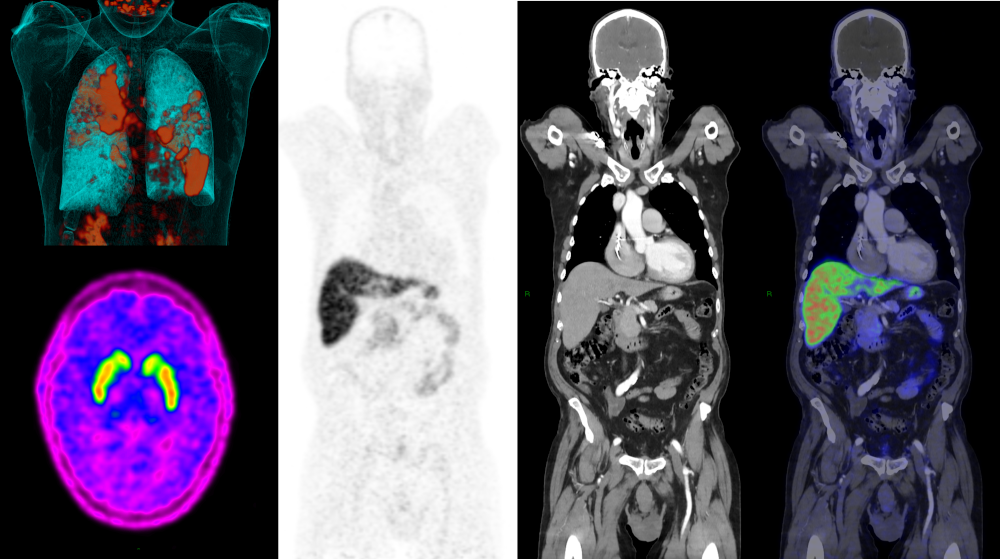NII PET-CT Unit
EARL accredited PET/CT Centre of Excellence
|

|
The NuMeRI Node for Infection Imaging in the Western Cape is a PET/CT and radiopharmacy research facility, and a core node of the Nuclear Medicine Research Infrastructure (NuMeRI), which forms part of the South African Research Infrastructure Roadmap (SARIR). The Node is hosted by the Central Analytical Facilities (Stellenbosch University) and is located at Tygerberg Hospital, in Cape Town.
Introduction
Nuclear imaging exploits a fundamental property of certain unstable atoms, namely that they will undergo radioactive decay by either directly or indirectly emitting gamma photons. By Labelling biological molecules of interest with positron-emitting radionuclides it becomes possible, using specialised equipment, to image the three-dimensional location of these radiopharmaceuticals. This imaging is performed with a positron-emission tomography (PET) scanner which is routinely combined with a conventional (x-ray) computed tomography (CT) system. The combined ability of such PET/CT systems to quantitatively and dynamically image the behaviour of radiolabelled molecules (radiopharmaceuticals) with a high degree of accuracy, and to localise their distribution precisely with the anatomical definition provided by CT, has revolutionised biological research.
Our Equipment
The keystone of the NII is its Philips Vereos digital PET/CT scanner, due to replacement of traditional photomultiplier tubes with solid-state silicon photomultipliers, it is possible for the Vereos PET to achieve 1:1 photon counting, resulting in unprecedented accuracy and effective sensitivity. The system is integrated with a Philips Ingenuity 64-channel (128-slice equivalent) CT with iDose4. which allows for low-dose diagnostic CT scanning with superior image quality to conventional FBP-based reconstruction techniques. The combination of high quantitative accuracy, superb effective sensitivity, and low-dose/high-quality CT scanning makes the Vereos the ideal nuclear imaging tool for research applications.
Supporting our PET/CT scanner is an advanced radiopharmacy. This unit boasts a dispensing laboratory, a hot Laboratory, a clean room, and a quality control laboratory. In these facilities, our staff are able to perform stringent quality control of injected radiopharmaceuticals, to label kit-based radiotracers, and to perform research and de-novo syntheses of radiolabelled molecules of interest.
Our Staff
The
Unit has 8 permanent staff members, including a nuclear medicine staff
scientist, a radiopharmacist, laboratory technician, three nuclear medicine radiographers, a practice
manager, and a medical administrator. This team offers researchers the support they need to perform the molecular imaging and analysis they require. They are supported by academic staff of the Divisions of Nuclear Medicine and Radiodiagnosis of the Faculty of Medicine and Health Sciences of Stellenbosch University, who have a Long track-record in PET/CT research.
Studies offered
The NII currently offers routine scanning with all commercially available radiopharmaceuticals in South Africa, as well as several radiopharmaceuticals labelled in-house, these include:
- F-18 fluorodeoxyglucose (FDG): a radioactive glucose analogue commonly used to image inflammatory processes; certain malignancies; regional brain metabolism; and cardiac viability (research, clinical).
- F-18 fluoro-DOPA (FDOPA): a radioactive amino acid transporter commonly used to image integrity of the striatal dopaminergic system; brain tumours; and selected malignancies of the sympathetic nervous system (research, clinical).
- Ga-68 PSMA: a radiotracer with high affinity for prostate cancer commonly used to stage high-risk cases and detect prostate cancer recurrence (research, clinical).
- Ga-68 DOTANOC: a radioactive somatostatin analogue commonly used to image selected neuroendocrine tumours (research, clinical).
- Ga-68 FAPI: a radiopharmaceutical targeting activated fibroblasts with emerging applications in oncology and inflammatory pathologies (research only).
- Ga-68 pentixafor: a radiopharmaceutical targeting the CXCR4 receptor, with emerging applications in the imaging of several cancers and the study of immune-trafficking in several inflammatory diseases (research only).
- F-18 FMISO: a radiopharmaceutical targeting intracellular hypoxia with several oncology applications (research only).
Interested parties should please contact the unit for further information.


